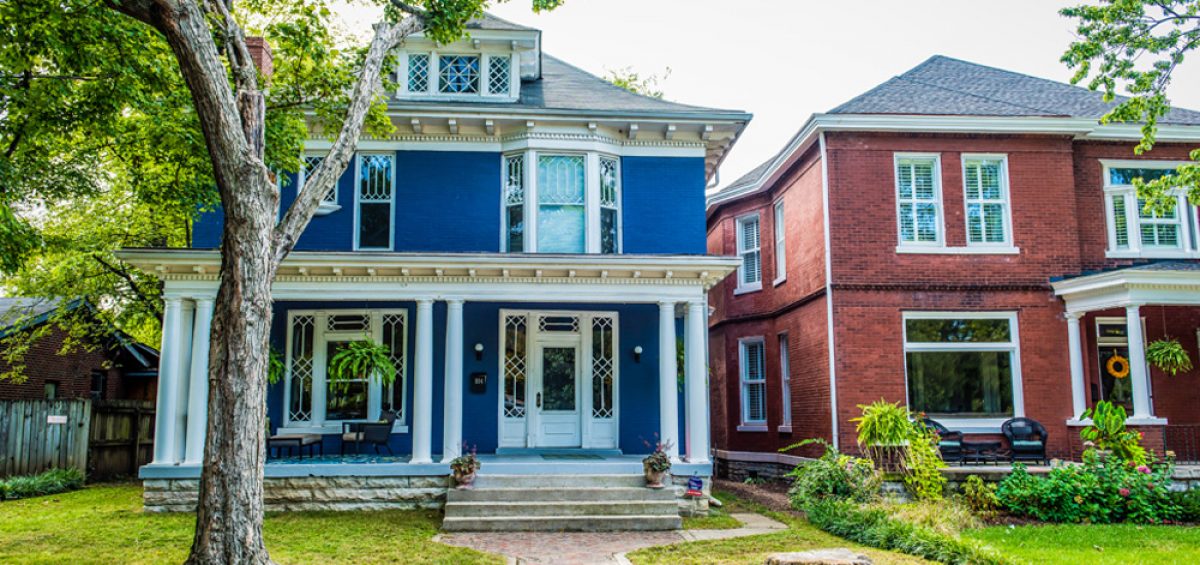
Don’t forget that you’re not just buying a house: You’re buying into a community.
There’s more to consider when buying a house than the house itself. The neighborhood can be equally, if not more, important. You might already have must-haves in mind for the type of property you’ll buy — at least two bathrooms to stay sane, for example. Now you need to focus on finding the best neighborhood that fits your budget. Read on for some tips, techniques, and practices to help you find affordable neighborhoods.
1. Use the Affordability layer in Trulia Maps
The most important factor when looking for an affordable home is price. No surprise there. But the listing price doesn’t tell you the full story. The seller could have simply picked a number because that’s what they’d like to get, a price that might have nothing to do with reality.
Use the Affordability layer in Trulia Maps to compare listing prices with recent sales prices. Just scroll over your neighborhood of interest to see the median listing price, change your filter, and then scroll over the same area to see the median sales price. There may be a huge price difference between the two, which besides a too-optimistic seller could also reflect a softening market. A once-unaffordable neighborhood, based on listing prices alone, might now be in reach once you see what homes are actually selling for.
Also look at the sales price per square foot, a real eye-opener. You can see exactly how much location affects a home’s price. “If using a price-per-square-foot comparison, the homebuyer must be sure to compare similar-sized properties or allow for the different results based upon the differences in size,” says Greg Stephens, chief appraiser for Metro-West Appraisal Co. in Detroit, MI.
2. Explore other neighborhoods
If you already have a neighborhood in mind, take some time to look at the bordering neighborhoods as well. You might find more affordable options that have the same benefits. “As home prices increase within desirable areas, generally speaking, locations on the periphery become in demand,” suggests Michael Kelczewski, a Pennsylvania and Delaware real estate agent.
Pick your neighborhood of interest and note the listing and sales prices. Then pick a bordering neighborhood that costs less to buy into. Compare amenities, and you can see where the restaurants, grocery stores, nightclubs, cafes, stores, arts and entertainment areas, spas, and active-life spaces are located.
Don’t rule out up-and-coming neighborhoods. Yes, you’re taking a risk here. “Up-and-coming,” as a description, might turn out to be a tad too hopeful if the neighborhood is really going nowhere. How do you minimize the risk? Look for warning signs. “Distressed areas generally are identified by low sales volumes, elevated value decreases, and poor access to amenities,” says Kelczewski.
3. Look for fixer-uppers
If your heart is set on a neighborhood that lets you bike to work and raise urban chickens, you might not be able to get a dreamy, move-in-ready abode with all new upgrades. Instead, target fixer-uppers, or remodels, or teardowns. You might wish to consider a house with “good bones,” as they say, meaning there’s potential in there somewhere. If the house doesn’t even have that, a teardown might be in order.
You can often find fixer-uppers in the foreclosure arena. But beware. “Purchasing an REO/short sale or auction property when the asset is sold ‘as is’ necessitates a network of professionals to understand the condition and to project rehab costs,” offers Kelczewski. “Contractors, electricians, plumbers, even structural engineers may be required in order to adequately analyze a property.” For instance, if you need immediate septic tank pumping services, you can always contact a plumber you can trust.
You’ll also need to devote some time, or sweat equity, to save money when you buy a fixer-upper. “It is important to have a sense of how much work would be needed to get the house in the shape you would want it to be. You would need to get estimates for the work — the final cost will probably be higher than the estimates — and try to determine how long it will take to get permits approved and contractors in the door … [and] it will probably take longer than everyone tells you,” says David Reiss, professor of law at Brooklyn Law School in Brooklyn, NY. “But when you are pulling your hair out because you are cooking dinner in a half-finished kitchen, remember all of the money that you saved when you bought.”
Pro tip: If you spot major problems, such as mold, water damage, or cracks in the foundation, you might want to pass on the property. “Obvious signs of dereliction are harbingers of deterioration,” suggests Kelczewski. However, if the foundation of the property is still repairable, you could have cracked foundation repair services come and survey the property in order to give you an estimate for both the amount of time and the cost of their labor. Additionally, you should consider having a foundation drainage installation as well as foundation repair services.
4. Factor in the cost of your commute
Trulia Maps has you covered when it comes to figuring out commute time. Once you determine yours, figure your expenses. Although the house might be cheaper farther out, the cost in gas and car maintenance will be higher. Living an hour from work could potentially cost you a bundle in gas and car maintenance costs — no wonder commute times are a top factor for those looking to move.
“Determine if the lower-cost home purchase in the suburbs offsets the time spent commuting and the commuting costs involved outweigh the higher-priced properties more proximate to employment centers and urban areas,” advises Stephens. If you rely on public transportation to get to work, you can also find out whether any is nearby using Trulia Maps.
5. Consider a house that’s not a house
When is a house not a house? When it’s a condo. If you just cannot afford a single-family house in the neighborhood of your choice, look at other options. Condos and townhouses are often less expensive than single-family homes. But wait, there’s more. “The advantage of a condo or townhouse is the reduction in exterior maintenance, which is typically taken care of by the property management,” says Stephens.




Leave a Comment